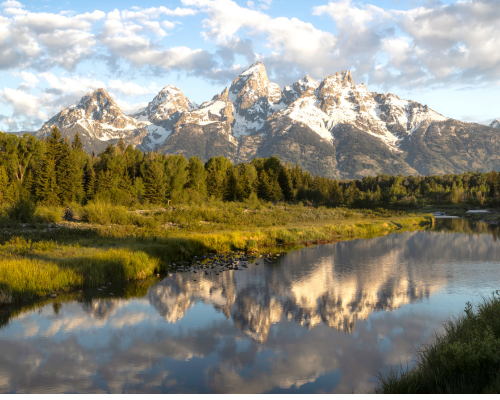Things that might interest you about Grand Teton National Park!

Grand Teton National Park was officially formed in 1950. Prior to then, beginning in 1926, it was known as Grand Teton National Monument. As a National Monument, this area was limited to the Teton Range and a few of its moraine lakes. The subsequent designation as a National Park expanded the Park boundaries to its current size of 310,000 acres.
Grand Teton National Park’s transformation from its earlier designation as Grand Teton National Monument to a fully-fledged National Park in 1950 marked a significant milestone in its history. Initially established in 1926, the area was known as a National Monument and encompassed the iconic Teton Range along with a handful of picturesque moraine lakes. This initial configuration captured the breathtaking beauty of the landscape but represented only a portion of the expansive wilderness that exists today. The subsequent elevation to National Park status in 1950 paved the way for the expansion of the park’s boundaries, embracing a vast expanse that now encompasses 310,000 acres of pristine and diverse natural wonders. This transformation has ensured that visitors can now explore the grandeur of not just the Teton Range and its lakes but also a rich tapestry of ecosystems, wildlife habitats, and captivating landscapes that define Grand Teton National Park’s contemporary identity.



Distinctive Features of Grand Teton National Park
Grand Teton sets itself apart through several distinctive attributes that contribute to its unique character and identity:
In and near the Park, visitors can witness magnificent views of the spectacular Teton Range (including its highest peak Grand Teton at 13,776 ft), wildflowers and MANY species of wildlife. The park is home to abundant wildlife which can be seen daily. These include elk, moose, mule deer, bison, pronghorn antelope, bighorn sheep, bears (black and grizzly), mountain lions, wolves, coyotes, fox, beaver, otters, eagles (bald and golden), multiple species of songbirds birds and waterfowl as well as many different types of wildflowers.
Visitors can also see its pristine lakes, Snake River and spectacular geologic formations, visitor centers and many hiking trails. Rafting adventures, fishing, horseback riding and dude ranch opportunities are also available. From the town of Jackson, one can be within GTNP in 10 minutes.
There are also 11 active glaciers in GTNP!




